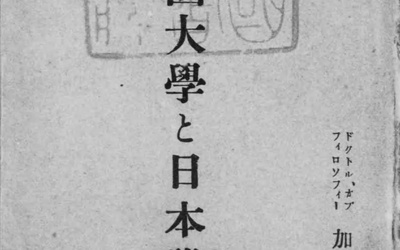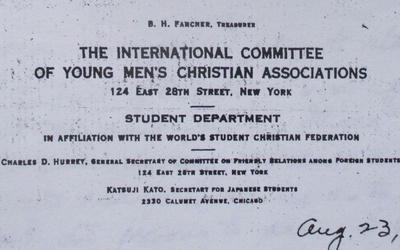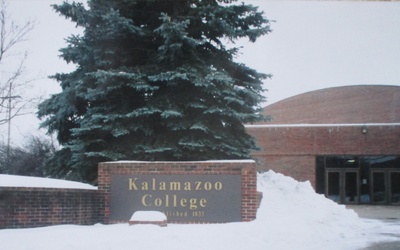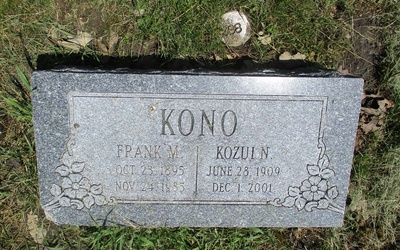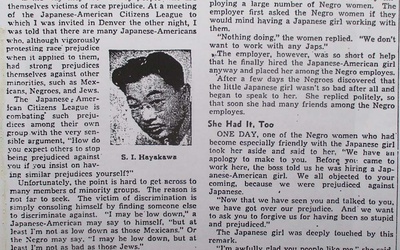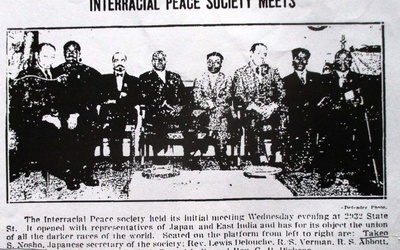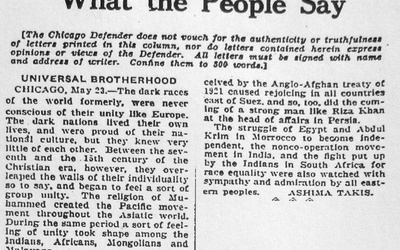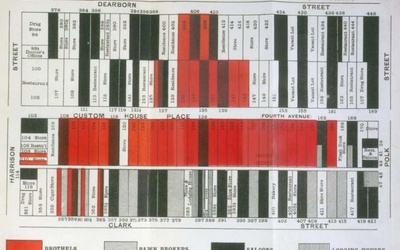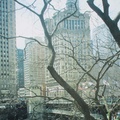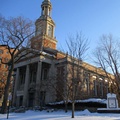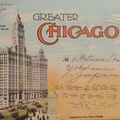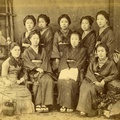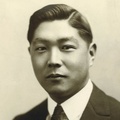
Takako Day
@takako70Takako Day, originally from Kobe, Japan, is an award-winning freelance writer and independent researcher who has published seven books and hundreds of articles in the Japanese and English languages. Her latest book, SHOW ME THE WAY TO GO HOME: The Moral Dilemma of Kibei No No Boys in World War Two Incarceration Camps is her first book in English.
Relocating from Japan to Berkeley in 1986 and working as a reporter at the Nichibei Times in San Francisco first opened Day’s eyes to social and cultural issues in multicultural America. Since then, she has written from the perspective of a cultural minority for more than 30 years on such subjects as Japanese and Asian American issues in San Francisco, Native American issues in South Dakota (where she lived for seven years) and most recently (since 1999), the history of little known Japanese Americans in pre-war Chicago. Her piece on Michitaro Ongawa is born of her love of Chicago.
Updated December 2016
Stories from This Author
Katsuji Kato: from Spiritual Savior to Medical Professional - Part 3
March 6, 2022 • Takako Day
Read Part 2 >> Katsuji Kato as publisher of The Japanese Student and The Japan Review Kato wrote about the history of early Japanese students in the U.S. in the 1860s1 and a bibliography on American-Japanese relations2 because he thought that “therecord of the past must be preserved, by disseminating accurate information concerning the intellectual relations of the United States and Japan, and contribute to the solution of the so-called Japanese problem in America, the creation of the spiritual and idealistic …
Katsuji Kato: from Spiritual Savior to Medical Professional - Part 2
Feb. 27, 2022 • Takako Day
Read Part 1 >> Katsuji Kato as a missionary for Japanese students The Student Volunteer Movement for Foreign Missions originated in New York in 1886, and the Student Volunteer Band for Foreign Missions on campus of University of Chicago “was composed of members of the International Student Volunteer Movement, organized in 1888.”1 In 1895, the Chicago branch of the Student Volunteer Movement for Foreign Missions was housed within the Bible Institute for Home and Foreign Missions of the Chicago Evangelization Society …
Katsuji Kato: from Spiritual Savior to Medical Professional - Part 1
Feb. 20, 2022 • Takako Day
Introduction: Kafu Nagai in Kalamazoo, Michigan Kafu Nagai was the pen name of Sokichi Nagai, the author of Amerika Monogatari, a collection of short stories published in Japan in 1908, that was based on his experiences living in the U.S. for four years. In the book, Kafu wrote that while small groups of elite, educated Japanese with significant financial advantages had come to the U.S. and settled on the East Coast, the majority of the poor Japanese laborers and students …
Japanese Affinity with African American Communities - Part 5
Jan. 9, 2022 • Takako Day
Read Part 4 >> Frank Masuto Kono When he heard about the Pearl Harbor attack, Frank Kono (the Issei who served as the secretary-treasurer of the Japanese Mutual Aid Society in Chicago and was arrested in 1943 with three other Japanese) was working at his restaurant, the Indiana Restaurant, at 4248 South Indiana Avenue in Chicago.1 Soon thereafter, the FBI came and searched Kono’s house not once but twice, and he was called in by the FBI and the Immigration and Naturalization …
Japanese Affinity with African American Communities - Part 4
Jan. 2, 2022 • Takako Day
Read Part 3 >> Samuel Ichiye Hayakawa and the Chicago Defender A brilliant scholar of semantics, English professor, poet, historian of Chicago jazz, and U.S. senator, S. I. Hayakawa was the first non-African American to write a series of columns for the Chicago Defender.1 In November 1942, the Defender announced five new columnists and S.I. Hayakawa, who was professor of semantics at the Illinois Institute of Technology at the time, was one of them.2 When he was offered the opportunity …
Japanese Affinity with African American Communities - Part 3
Dec. 26, 2021 • Takako Day
Read Part 2 >> Sociologist Tadao Kawamura and the University of Chicago It is not known at this point whether Harry Jitsuzo Harada (the journalist who wrote to Booker T. Washington asking his opinion about Japanese immigration on December 15, 1919) ever completed his book on African Americans, but Tadao Kawamura actually did. Kawamura was a sociologist trained at the University of Chicago and his book, American Negro no Kenkyu (Research on American Negros) was considered the first Japanese book …
Japanese Affinity with African American Communities - Part 2
Dec. 19, 2021 • Takako Day
Part 1 >> Booker T. Washington, Marcus Garvey, and Jitsuzo Harada in Chicago Tuskegee Institute in Alabama, founded by Booker T. Washington in 1887, was well-known by certain Japanese because “Japanese who had read Up from Slavery in translation saw in Tuskegee methods one of the means of overcoming their nation’s technological lag behind the West” and Tuskegee was “a mecca for not only Africans but West Indians and Asians.”1 The first Japanese student at Tuskegee, who enrolled “as part …
Japanese Affinity with African American Communities—Part 1
Dec. 12, 2021 • Takako Day
Introduction In December 1943, when loyal Japanese Americans were leaving concentration camps and relocating to cities in the Midwest such as Chicago, Cleveland, and Kansas City, four Japanese Issei men were arrested in Chicago by the FBI. They were Charles Yasuma Yamazaki and Frank Masuto Kono, who had been Chicago residents for more than twenty years, and Soyu Matsuoka, a Buddhist priest, and Robert Hajime Shiomi, a medical doctor from Oregon. Matsuoka and Shiomi were new to Chicago. Matsuoka came …
Who Taught the Word skebe to Americans?: Skebe in Chicago's Japanese American Community - Part 3
Oct. 24, 2021 • Takako Day
Read Part 2 >> Japanese “skebe” on Chicago's Armour Avenue According to a “red-light district” map of Chicago made in 1910, there were two Japanese brothels on Armour Avenue. One was between Cullerton Street (20th Street) and 21st street, and the other was between 21st Street and 22nd Street. Next door to each of these Japanese brothels were Chinese brothels. There were about thirty-five Japanese prostitutes in those brothels. “Japanese and Chinese whorehouses … catered only to white men”1 and …
Who Taught the Word skebe to Americans?: Skebe in Chicago's Japanese American Community - Part 2
Oct. 17, 2021 • Takako Day
Read Part 1 >> “Skebe” and the Columbian Exposition of 1893 In 1892, more Japanese began arriving in Chicago to prepare for Japan’s exhibit in the Columbian Exposition, to be held the following year. The Chicago Tribune reported that “a large and constantly increasing and firmly established colony of Japanese was observed.”1 In November 1892, about forty Japanese, including the officials responsible for the exhibition (such as Masamichi Kuru, the official architect, Yoshihiko Yambe, the secretary, and twenty-five carpenters who …

